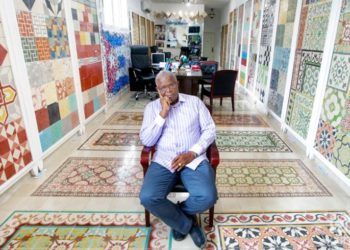Photos by the Author
"This is not a time for smart songs", a good friend of mine is fond of saying; a man whose love for trova is strengthened as years pass, without "wasting", according to his unchangeable opinion, a minute to listen to other genres which he labels, no matter what, as "commercial".
My friend is really nostalgic. Sometimes I remember how distant in the picture are Bob Dylan and Joan Baez, former "kings of the protest song”, during the civil rights march in 1963. Other times I say that Serrat has aged, Mercedes Sosa has died and Silvio Rodriguez has not returned to record an album with the energy of "Days and flowers" or "At the end of this journey." Then he looks at me, as if rectifying me is not even worth. "In Cuba there is no shortage of troubadours, what is needed is that they showed them on TV or play them on the radio, so people get to know them " he claims.
He is probably right. Contemporary songwriters, at least a good part of them, exhibit a work of such maturity and artistry that well deserves a little more attention from record companies who design the programming at the radio stations. What might look like an incomprehensible paradox is the fact that more than a few have spaces for live performances: the useful clubs, attended mostly by a young audience, demonstrating they don’t despise at all the now remote “the smart song times."
One such place of privilege is nestled in the heart of downtown Havana, in the courtyard of the legendary Areito studies (San Miguel No. 410 between Lealtad and Campanario), which is run by the Company of Recordings and Musical Editions (EGREM) where the most prominent figures of Cuban music have recorded their art through history,.
Every Wednesday, from 5 to 7 pm (though the party usually extends until late hours), the troubadours gather at this place without any prior notice. It is a known fact: the poet and journalist Bladimir Zamora Céspedes, an unconditional lover of Cuban trova and host of “Trovando” as it once was Fidelito Diaz, gives them all a chance to sing his songs. Samuel Aguila, Diego Cano, Ihosvany Bernal, Juan Carlos Perez, Silvio Alejandro, Eric Mendez and other singers, from this and other generations, have earned themselves the title of "usual" while attending, with increasing frequency, very young followers of minstrel tradition, like the talented Ernesto Mederos and Manolito Bas.
The stage is narrow, you could call it rustic: a pair of seats located in front of the audience and the same number of lines and microphones. The rest comes out of the desires to sing and immediate communication is established between the singers and the audience, a very interactive audience by the way, that does not miss the opportunity to, “live and direct" ask for their favourite songs, with which most often they are pleased. It has to do with the original spirit of the trova and the bohemian musical, which Sindo Garay and Manuel Corona were the most notorious exponents at their time. It has to do with the sensitivity of deep popular roots, which marked the highlights of the Nueva Trova, through the 1960s, 70s and 80s. It has to do with the need still inherent in every human being to look at himself in the mirror of a song, to conform to the molding of a verse, to share with their peers the rage, tenderness and longing, feelings trova that has always been the depository of.
In such a way, and without missing a single Wednesday, Trovando has turned the EGREM courtyard into a trova sanctuary, where you can not only enjoy a mojito or a cold beer, but also (and besides) get filled with the vital scent of a poetic song; that one that many, like my demanding friend, find it necessary to continue breathing.










